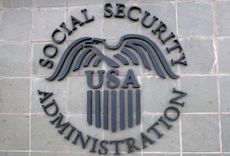
Beware: For some IRA owners, the new law may throw a wrench into their QCD strategy.
When you purchase through links on our site, we may earn an affiliate commission. Here’s how it works.
published 2 March 2020If you like to give to charity while also trimming your tax bill, the qualified charitable distribution strategy may be your go-to move: IRA owners who are 70½ or older can transfer up to $100,000 per year to charities they support. Plus, the QCD can count toward annual IRA required minimum distributions. And there’s more: The QCD isn’t included in adjusted gross income, so taxpayers who don’t itemize can benefit. Given today’s higher standard deductions that make it harder to itemize, the QCD is an under-the-radar opportunity to trim your tax tab.
But be aware that for some IRA owners, the Setting Every Community Up for Retirement Enhancement Act may throw a wrench into their QCD strategy. That’s because the SECURE Act also created a rule that limits the amount of QCDs a traditional IRA account holder can make, says Jeffrey Levine, director of financial planning for BluePrint Wealth Alliance, in Garden City, N.Y. Referred to as the “anti-abuse provision,” its effect is to reduce allowable future QCDs, he explains. While the intent apparently was to limit any opportunity for abusing charitable QCDs, the result is to make it more complicated to use the strategy.
Why is this an issue? Because one provision of the SECURE Act repeals the age cap for making contributions to a traditional IRA. “IRA owners must now reduce their intended QCDs by any contribution amounts made into their IRAs after age 70½, to the extent they have not already been used to reduce their QCD,” Levine writes in an analysis for Kitces.com, a website geared to financial advisers. “In other words, IRA contributions made after age 70½ cannot be turned around to be used as QCDs.”
Be a smarter, better informed investor.
Save up to 74%
Profit and prosper with the best of expert advice on investing, taxes, retirement, personal finance and more - straight to your e-mail.
Profit and prosper with the best of expert advice - straight to your e-mail.
IRA expert Ed Slott says the new rule essentially creates a “taxable QCD,” which traditional IRA owners can take steps to avoid. Because the SECURE Act does away with the age limit for traditional IRA contributions, it opens the door for individuals age 70½ or older to make deductible IRA contributions. But for those who make both QCDs and deductible IRA contributions, the new rule limits the portion of the QCD that is excluded from income. “That effectively creates the taxable QCD,” Slott says. It does not limit the amount of the IRA contribution that is deductible, he notes.
Slott offers this example: You make a QCD in 2020 for $10,000. You also make a $7,000 deductible IRA contribution. Your charity receives the full $10,000, but the tax-free portion of the QCD reported on your tax return is reduced to $3,000. The remaining $7,000 of the QCD is taxable. “It’s the dumbest thing I’ve ever seen enacted,” Slott says.
Keep in mind that the SECURE Act also raises the starting RMD age to 72, effective in 2020. So if you turn 70½ this year, you can do a qualified charitable distribution but it won’t count toward your RMD since those don’t kick in until you are 72. The QCD will still not show up in your adjusted gross income if you aren’t making deductible contributions to the IRA. And the QCD could work to your advantage by lowering the amount of your IRA balance by the time you reach 72 and your RMDs begin, says retired certified public accountant Joseph Namath of Estero, Fla.
There are some moves you can make to avoid the “QCD tax.” The simplest: Just don’t take the deduction for an IRA contribution, Slott says. If you fall below the income thresholds to qualify for Roth contributions, consider contributing to a Roth IRA instead and do a QCD from a traditional IRA.
If you are married, spouses who each have their own IRAs can coordinate contributions to bypass the rule, Slott says. Because IRAs are individually owned accounts, one spouse can choose to use her IRA to make post-70½ deductible contributions and the other spouse can use his IRA to do QCDs.
Traditional IRA contributions can be voluntarily removed until October 15 of the year following the year in which the contribution was made, Levine says. So if you made an IRA contribution, then decide you’d rather do a QCD, you can withdraw the contribution during that time frame so your QCD isn’t reduced.
Profit and prosper with the best of Kiplinger's advice on investing, taxes, retirement, personal finance and much more. Delivered daily. Enter your email in the box and click Sign Me Up.
By submitting your information you agree to the Terms & Conditions and Privacy Policy and are aged 16 or over.
Associate Editor, Kiplinger's Retirement ReportMary Kane is a financial writer and editor who has specialized in covering fringe financial services, such as payday loans and prepaid debit cards. She has written or edited for Reuters, the Washington Post, BillMoyers.com, MSNBC, Scripps Media Center, and more. She also was an Alicia Patterson Fellow, focusing on consumer finance and financial literacy, and a national correspondent for Newhouse Newspapers in Washington, DC. She covered the subprime mortgage crisis for the pathbreaking online site The Washington Independent, and later served as its editor. She is a two-time winner of the Excellence in Financial Journalism Awards sponsored by the New York State Society of Certified Public Accountants. She also is an adjunct professor at Johns Hopkins University, where she teaches a course on journalism and publishing in the digital age. She came to Kiplinger in March 2017.

When Will the Social Security 2025 COLA be Announced? The Social Security Administration will announce the official 2025 COLA, the earnings-test limit for 2025 and the wage cap for Social Security taxes on the same day. By Donna LeValley Published 23 September 24

Sometimes It Pays to 'Blow the Whistle' on IRS Tax Evaders Tax Fraud The IRS recently awarded three IRS whistleblowers $74 million. Here's why. By Kate Schubel Published 23 September 24

Does Kansas Tax Social Security Benefits? Social Security The Sunflower State’s new tax package will have a widespread impact on retirees and young families. Here’s what you can expect. By Gabriella Cruz-Martínez Published 19 September 24

Will EVs Drive the Vote in Election 2024 Swing States? Tax Credits Electric vehicle tax credits have somehow become controversial. So car buyer attitudes in swing states might make a difference. By Kate Schubel Last updated 20 September 24

Only Five States Offer No Sales Tax State Tax Is your state’s ban on sales tax actually saving you money? Probably not as much as you might think. By Gabriella Cruz-Martínez Published 17 September 24

Colorado’s New Property Tax Reform Could Save You Hundreds Property Tax The Centennial State just signed a new property tax bill into law. Here’s what you need to know. By Gabriella Cruz-Martínez Published 12 September 24

Five New Tax Credits in Harris Economic Plan: What to Know Election 2024 Democratic nominee, Vice President Kamala Harris has proposed several tax breaks. Here's what you need to know. By Kelley R. Taylor Last updated 12 September 24

New York Sending School Tax Relief (STAR) Checks Tax Relief Are you receiving a NY STAR credit or exemption for your property taxes? By Kate Schubel Published 6 September 24

How the Election Could Impact the EV Tax Credit Tax Credits It’s no secret electric vehicles have become a bit of a political issue. But what does that mean for your EV tax break? By Kate Schubel Last updated 6 September 24

How Trump and Harris Might Handle Expiring TCJA Tax Cuts Election 2024 Many key provisions of the TCJA will expire soon. Here’s why it matters during the 2024 election cycle. By Gabriella Cruz-Martínez Last updated 5 September 24
Kiplinger is part of Future plc, an international media group and leading digital publisher. Visit our corporate site.
© Future US, Inc. Full 7th Floor, 130 West 42nd Street, New York, NY 10036.